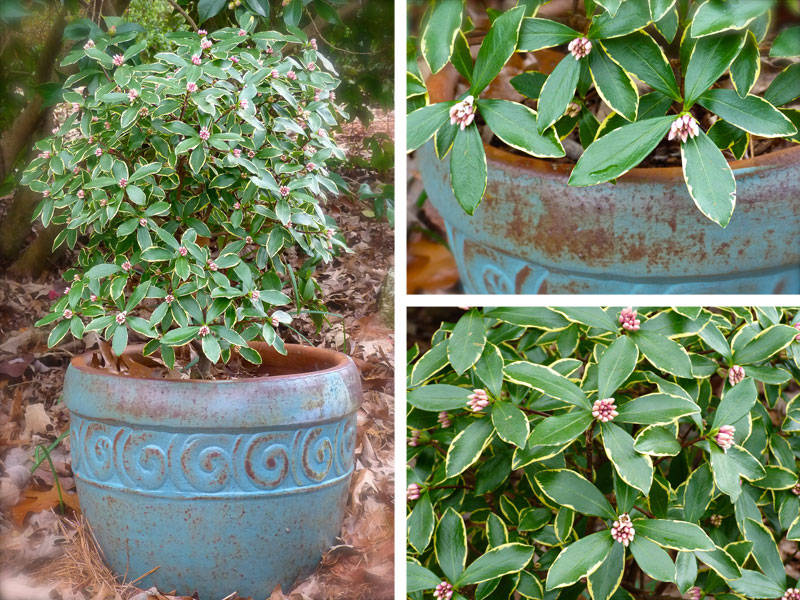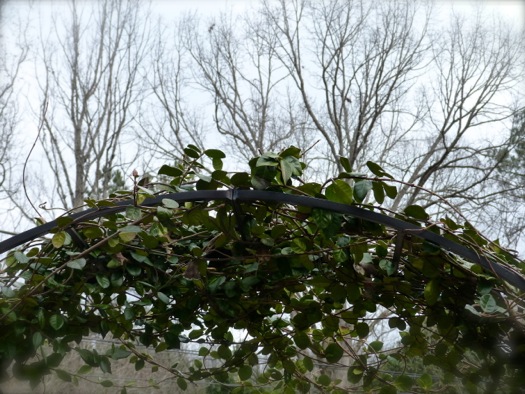Engines Thrumming
 Saturday, January 23, 2016 at 6:00PM
Saturday, January 23, 2016 at 6:00PM After days of heavy rain, bitter winds, plummeting temperatures and even some snow flurries, I ventured outside this morning, briefly, like a snail poking its head from its shell to check out the surroundings.  The buds of winter blooming Edgeworthia chrysantha are beginning to swell.
The buds of winter blooming Edgeworthia chrysantha are beginning to swell.

 Hellebores, just beginning to bloom, are hunkering down against the weather.
Hellebores, just beginning to bloom, are hunkering down against the weather.
 Daphne odora 'Aureo-marginata' has fragrant blooms in late winter. Buds are expanding and soon should open.
Daphne odora 'Aureo-marginata' has fragrant blooms in late winter. Buds are expanding and soon should open.
As if to greet me, the sun came through the clouds, but the icy air soon drove me back into the warm house.
A couple of weeks ago the air was so warm I was outside working in the garden with my internal gardening engines thrumming to start on spring chores. It was premature and I knew it, just as I knew all those azaleas blooms that had started to open would soon get zapped.  Encore azalea foliage provides hints of color.
Encore azalea foliage provides hints of color. Evergreens are the backbone of my garden, and they provide a lot of interest through the winter.
Evergreens are the backbone of my garden, and they provide a lot of interest through the winter.
 Arborvitae fern has grown to a lush ground cover beside my front walk.
Arborvitae fern has grown to a lush ground cover beside my front walk.
 Jasmine growing over an arch has a wintry background.Winter and spring always play a fitful tug-of-war here. By March, spring should win out.
Jasmine growing over an arch has a wintry background.Winter and spring always play a fitful tug-of-war here. By March, spring should win out. Nandina 'Firepower' has especially bright winter foliage.
Nandina 'Firepower' has especially bright winter foliage.
 Ornamental Kale provides a bouquet of color for months, from fall all the way through winter and into spring. I cut it back when it gets leggy, and it regrows.In the meantime, I am back inside, my engines thrumming, making plans as I sit by the fire with my garden books.
Ornamental Kale provides a bouquet of color for months, from fall all the way through winter and into spring. I cut it back when it gets leggy, and it regrows.In the meantime, I am back inside, my engines thrumming, making plans as I sit by the fire with my garden books.

